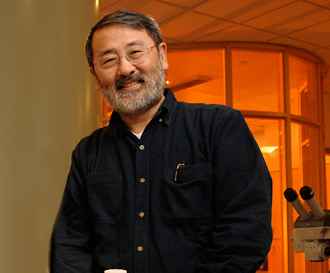Wise Young Nears Cure for Spinal Cord Injuries
Chinese American doctor Wise Young has networked clinical trials in China as the most likely path to a cure for spinal cord injuries like the one suffered by the late Superman actor Christopher Reeve.
The actor who is best known for playing Superman became a quadriplegic in 1995 after the horse he was riding fell on him. Reeves approached Young, a Rutgers University neuroscience professor who was generally considered the leading US expert on spinal cord injuries.
Young became close friends with Reeves as the two began discussing possible stem-cell-based cures for those who have suffered similar spinal cord injuries. Reeve died of a heart attack in 2004 at the age of 52 but Young has continued to pursue the actor’s dream of finding a way to use stem cells to treat the kind of condition suffered by Reeve. Today he is conducting clinical trials of stem-cell therapy in China.
“Everybody assumed that I’m doing this in China because I wanted to escape George W. Bush, but that’s not the case at all,” Young told AFP. In 2001 President Bush had blocked Federal funding of all research that used embryonic stem cells.
Young began conducting stem cells trials in Hong Kong in 2005 to keep a promise he made to Chinese gymnast Sang Lan who had crushed her spine during a routine warm-up exercise at the Goodwill Games in New York in 1998. Over the following 12 months she underwent treatment and rehabilitation in the US. At that time Young was the nation’s top expert on spinal cord injuries and was approached by Sang’s parents.
In 1999, after Lan returned to China, Young began seeking out spinal cord doctors in China. The effort led to the founding of China Spinal Cord Injury Net in Hong Kong in 2005. The firm is the world’s largest clinical trial network for spinal cord therapies and is preparing to expand into Europe, India and the United States.
“We’re testing umbilical cord blood-cell transplants into the spinal cord combined with lithium treatments,” said Young,
The trial involves 20 centers in China, Hong Kong and Taiwan. Stem cells are injected into damaged spines to regrow nerve fibers, with lithium used to promote the growth. The trials are set to enter the third and final phase next year. While Young is encouraged by the results so far he says it’s too early to draw conclusions about recovery of movement.
“What we can comfortably say right now is that the procedure seems to be quite safe. Nobody has lost any function,” he added. “We don’t expect people to be jumping out of bed and running marathons after this. Regeneration is a slow process.”
Some of severely injured participants are being taken through walking exercises at the Army General Hospital in Kunming in southwestern China. The patients undergo a grueling regimen of two three-hour sessions each day to “sculpt” their nerve fibers back into shape. Young says it’s like running a marathon every day. Reeve did about two hours of exercise daily, says Young.
The patients are driven to make the effort by the cheers of family members and by a sense of friendly competition with each other.
“They are joshing with each other, saying ‘I’m going to beat you today’,” says Young. “There’s that kind of atmosphere that allows you to do it six hours a day, and once it becomes a routine you keep going.”
The increased resources that China is devoting to treating spinal cord injuries is due to a 10-fold increase in such cases since 1995 as a by-product of the rapid increase in the number of automobiles and construction sites. Eighty thousand new spinal cord patients are added to Young’s list every year.
The surging demand and increased spending has put China’s spending on biomedical research at least on a par with the US with a superior legal framework for clinical standards, according to Young.
“It’s turned 180 degrees from the time Sang Lan was asking how will therapies get to China,” he says. “Now Americans want to go to China.
“This is not what I would have said to Sang Lan back in 1998, but it is possible that the cure for spinal cord injury will actually come from China.”
It is only recently, with the advances he has seen in stem-cell therapy, that Young has begun using the word “cure”.
“We’re not going to be able to make the body exactly the same as it was before the injury,” he explains. “What we should do is get [patients] to a point where you can’t tell that they have been injured, and I think that is an achievable goal.”
Wise Young was born in Hong Kong to an entrepreneurial family in 1950. He received a B.A. in biology and chemistry from Reed College, a Ph.D. in physiology and biophysics from the University of Iowa and an M.D. from Stanford University. He currently heads up the W.M. Keck Center for Collaborative Neuroscience at Rutgers in addition to his work with the China SCINet spinal cord treatment clinical trials.

Chinese American neuroscientist Wise Young founded the Hong Kong-based China Spinal Cord Injury Net in 2005.

